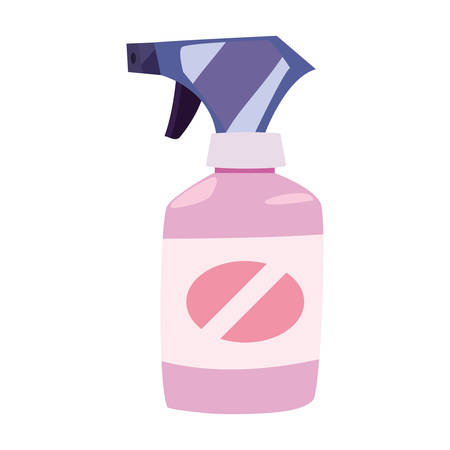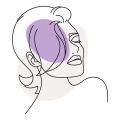Why Tool Maintenance Matters
When it comes to keeping your hair tools in top shape, regular cleaning and maintenance aren’t just about appearance—they’re key to performance, hair health, and making your investment last. Over time, styling tools like flat irons, curling wands, brushes, and blow dryers accumulate product buildup, oils, dust, and even bacteria. This grime can impact how well your tools work, causing uneven heating or reduced effectiveness. More importantly, dirty tools can transfer residue back to your hair, leading to dullness, breakage, or scalp irritation. By properly maintaining your hair tools, you not only ensure they deliver consistent results but also promote healthier hair with every use. Plus, clean and well-cared-for equipment tends to last longer, saving you money and hassle in the long run. In a nutshell: good tool hygiene is essential for optimal performance, supporting hair health, and maximizing the life of your beauty investments.
2. Essential Cleaning Supplies
To keep your hair tools in top shape and extend their lifespan, youll need the right cleaning supplies for each type of tool. Whether you’re working with brushes, combs, flat irons, or curling wands, having a dedicated toolkit will make maintenance quick and effective. Below is a breakdown of must-have products and tools for properly cleaning different hair styling devices:
| Tool Type | Essential Cleaning Supplies | Purpose & Usage Tips |
|---|---|---|
| Hair Brushes & Combs |
|
|
| Flat Irons & Curling Wands |
|
|
| Clippers & Trimmers |
|
|
General Tips for All Tools
- Avoid soaking electrical parts—always unplug before cleaning and let them dry completely before use.
- If you use styling products regularly, increase your cleaning frequency to prevent sticky buildup that can affect performance.
- Use only gentle, non-abrasive materials to avoid scratching surfaces or damaging coatings on your tools.
The Right Supplies Make the Difference
Selecting proper cleaning products tailored to each tool ensures effective maintenance without causing damage. Investing in these basic supplies will not only extend the life of your hair tools but also maintain their hygiene for optimal styling results every time.

3. Step-by-Step Cleaning Guide for Each Tool
Brushes: Daily and Weekly Care
Daily Maintenance
After each use, remove any hair from your brush using your fingers or a comb. This quick habit helps prevent product buildup and keeps bristles in top shape.
Weekly Deep Clean
Soak brushes in a sink or bowl filled with warm water and a few drops of gentle shampoo or dish soap—both are staples in American households. Swirl the brush to loosen debris, then use an old toothbrush to scrub between bristles. Rinse thoroughly and lay flat on a clean towel to air dry. Avoid soaking wooden handles to prevent warping.
Hot Tools: Irons, Curlers, and Blow Dryers
Surface Cleaning After Use
Always unplug hot tools before cleaning. Once cool, wipe the plates or barrels with a damp microfiber cloth to remove product residue. For stubborn spots, lightly dampen the cloth with rubbing alcohol—a common household item in the U.S.—and gently rub the affected area.
Monthly Deep Clean
Check vents and seams for dust or lint buildup, especially in blow dryers. Use a small brush (like an old toothbrush) or canned air to clear out debris. This step is crucial for maintaining performance and safety.
Accessories: Combs, Clips, and Hair Ties
Quick Wash Routine
Collect all your accessories in a mesh laundry bag or colander. Soak them in warm soapy water for 10-15 minutes, then rinse well. Lay them out on a towel to air dry completely before reuse.
Pro Tip:
If you notice sticky residue or product gunk on accessories, use a cotton swab dipped in rubbing alcohol for spot cleaning.
4. Drying and Storage Best Practices
After cleaning your hair tools, proper drying and storage are crucial to ensure longevity and maintain optimal performance. In American homes and salons, professionals prioritize both efficiency and hygiene in these processes. Here’s how you can implement the best practices for drying and storing your hair tools:
Effective Drying Techniques
Thorough drying prevents rust, mold, and bacterial growth—common culprits that shorten the lifespan of styling tools. Here’s a quick reference for recommended drying methods:
| Tool Type | Drying Technique |
|---|---|
| Brushes & Combs | Towel-dry excess water, then air-dry bristle-side down on a clean towel to prevent water from collecting at the base. |
| Scissors & Shears | Pat dry with a lint-free towel; allow to air-dry fully before closing or storing. |
| Curling Irons & Flat Irons | Ensure unplugged and cooled; wipe with a dry cloth after cleaning, then leave out until no moisture remains. |
Smart Storage Solutions
Proper storage keeps tools organized, accessible, and safe from damage. American households and salons often use the following methods:
- Wall-mounted Racks: Save counter space by hanging tools, especially blow dryers and irons, on heat-resistant wall racks.
- Drawer Organizers: Use divided trays or silicone inserts to separate brushes, combs, and small accessories within drawers.
- Pouches & Cases: For travel or infrequent use, store tools in fabric or hard-shell cases to protect from dust and accidental drops.
- Baskets & Bins: Place frequently used brushes or combs in open bins near your vanity for quick access while maintaining airflow for further drying.
Quick Tips for Both Home & Salon Settings
- Avoid storing any tool while damp—always ensure complete dryness first.
- Keep electrical cords loosely coiled to prevent wire damage or tangling.
- If you share tools in a salon environment, label storage spots for each stylist to reduce cross-contamination risks.
Pro Tip:
Add silica gel packets or moisture absorbers to storage drawers or cases to help keep humidity in check—especially important in humid climates common across many parts of the U.S.
5. How Often Should You Clean Your Hair Tools?
Keeping your hair tools clean isn’t just about appearances—it directly impacts tool performance, hair health, and even safety. In the U.S., with the fast-paced lifestyle and frequent use of styling products, proper cleaning frequency can make all the difference in tool longevity. Here’s how often you should clean your hair tools based on type, usage habits, and typical American routines:
Brushes and Combs
Recommended Frequency: Once a week
If you use styling products like mousse or hairspray daily, consider cleaning every 3-4 days. For minimal product users, a thorough weekly cleaning works well. Remove hair after each use to prevent buildup and keep bristles functioning optimally.
Flat Irons, Curling Irons, and Hot Tools
Recommended Frequency: Every 1-2 weeks
Heat styling tools accumulate product residue faster when used with thermal protectants or styling sprays—common in the U.S. to achieve trending looks. Wipe them down after every few uses and deep clean biweekly to ensure maximum efficiency and avoid damaging your hair with burnt-on residue.
Hair Dryers
Recommended Frequency: Once a month for filter and vent cleaning
Given the prevalence of blowouts at home, especially among Americans with busy schedules, dust and lint can quickly collect inside vents. Detach removable parts monthly and clear out debris to maintain airflow and prolong motor life.
Clippers and Trimmers
Recommended Frequency: After every use
If you cut hair regularly at home—a growing trend—clean clippers immediately after each session. Oil blades as needed per manufacturer instructions to prevent rust and maintain sharpness.
Lifestyle Factors to Consider
If you live in a humid region or share tools among family members, increase cleaning frequency to minimize bacterial growth. Active lifestyles involving gyms or outdoor activities may also warrant more frequent maintenance due to sweat and environmental buildup.
Pro Tip
Set reminders on your phone or calendar for scheduled cleanings—this small habit ensures your tools stay hygienic, work better, and last longer, fitting perfectly into the American focus on efficiency and self-care.
6. Signs It’s Time to Replace Your Tools
Even with the best cleaning and maintenance routine, hair tools won’t last forever. Knowing when to replace them is essential for both safety and your hair’s health. Here are the most common signs that a tool has reached the end of its lifespan:
Excessive Wear and Tear
If you notice cracks, chips, or warped surfaces on your brushes, combs, or heat tools, it’s time to retire them. Damaged tools can snag hair, causing breakage or even scalp irritation.
Loose or Missing Parts
For styling tools like blow dryers, curling irons, or flat irons, any loose screws, exposed wires, or missing plates are major red flags. These issues not only impact performance but also create potential safety hazards.
Persistent Residue Build-Up
If deep cleaning doesn’t remove product residue or buildup—especially in brush bristles or on heating plates—it’s likely beyond saving. Caked-on gunk can transfer back onto clean hair and harbor bacteria.
Discoloration and Rust
Rust on metal parts or significant discoloration that doesn’t come off with cleaning means the tool is compromised. Rust can weaken metal components and expose your hair to unnecessary risks.
Overheating or Inconsistent Performance
If heat tools take longer than usual to warm up, don’t maintain consistent temperature, or get too hot unexpectedly, their internal mechanisms might be failing. This not only damages your hair but could also cause burns.
Strange Odors
A burnt smell or any unusual odor from electrical tools is a sign of internal damage. Unplug immediately—using them further could be dangerous.
Bristle Shedding or Bent Teeth
If your brushes shed bristles excessively or combs have bent or missing teeth after cleaning attempts, replacement is necessary. Damaged bristles/teeth can tug at hair and lead to split ends.
Don’t compromise your hair health by holding onto worn-out tools. When you spot these warning signs, it’s best to invest in new equipment for safe and effective styling.
7. Bonus Pro Tips for Extending Tool Lifespan
Want to get salon-level longevity out of your hair tools? Top American stylists share these pro strategies to keep your favorites in prime condition longer:
Store Smarter, Not Harder
Don’t just toss your hot tools into a drawer or leave them plugged in. Always let them cool completely on a heat-resistant mat and store them in a protective pouch to prevent cord damage, scratches, and dust build-up.
Use the Right Cleaning Products
Stylists swear by using 70% isopropyl alcohol or gentle, residue-free cleansers instead of harsh chemicals. This keeps plates and barrels free from buildup without stripping protective coatings.
Be Mindful of Water Exposure
Never submerge electric tools or let water get near the plug or motor. For brushes and combs, rinse only the bristles and avoid soaking wooden handles to prevent warping.
Check Cords and Plugs Regularly
Inspect cords for frays or exposed wires every month. If you spot damage, stop using the tool immediately—frayed cords are not just inconvenient, but a fire hazard.
Avoid Product Overload
Avoid using too much hair spray, mousse, or oil right before styling with hot tools. These can create stubborn residues that gunk up plates and decrease performance over time.
Schedule Deep Cleans
Set a monthly reminder for thorough cleaning. Many pros use a soft toothbrush to reach tight spots and keep airflow vents clear on blow dryers for optimal efficiency.
Invest in Professional-Grade Tools
Finally, American stylists recommend investing in professional-grade tools—they’re built to withstand heavy use and often come with replaceable parts for extended lifespan. With these expert tips, your hair tools will stay reliable session after session!


